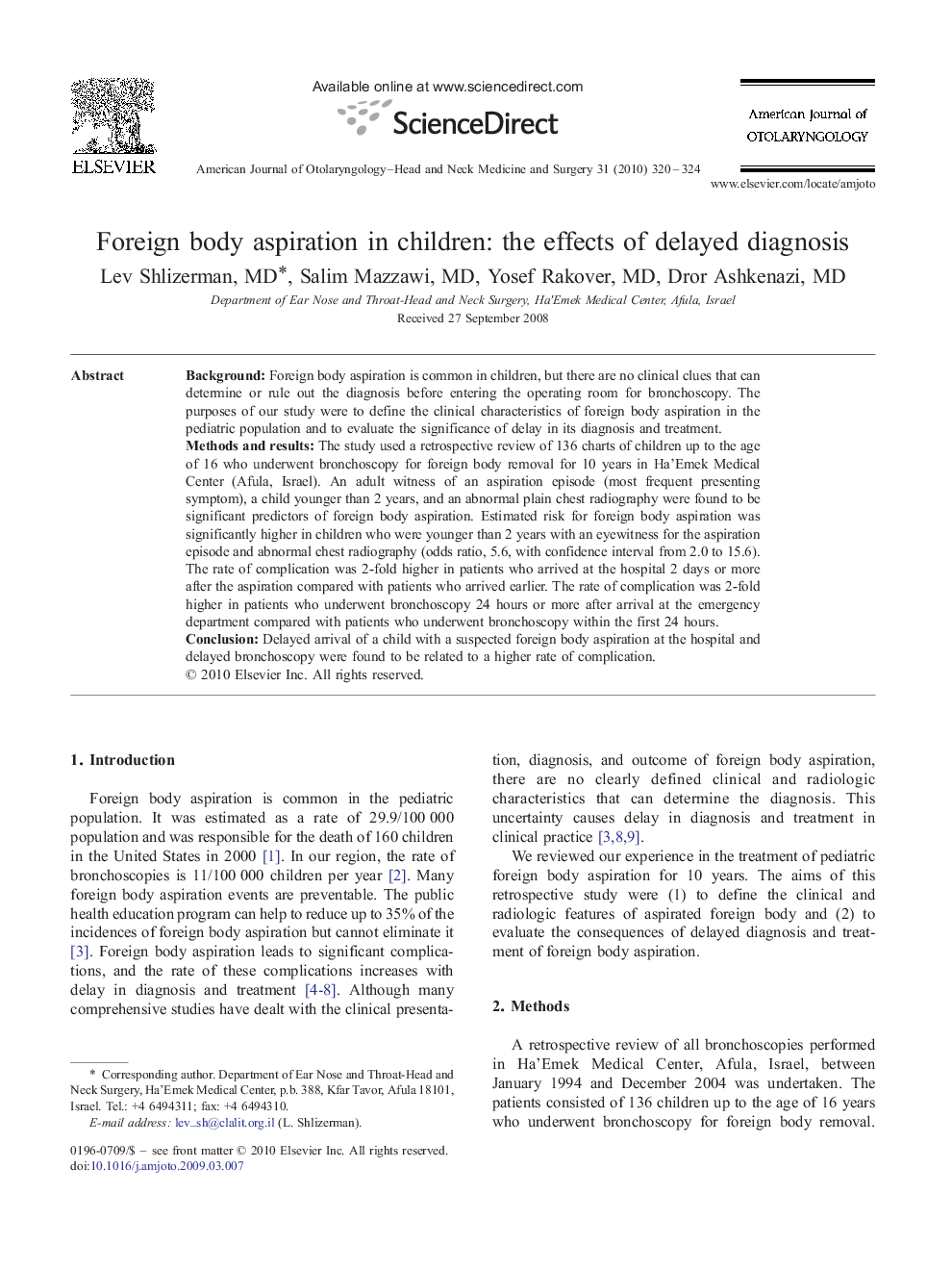| Article ID | Journal | Published Year | Pages | File Type |
|---|---|---|---|---|
| 4103982 | American Journal of Otolaryngology | 2010 | 5 Pages |
BackgroundForeign body aspiration is common in children, but there are no clinical clues that can determine or rule out the diagnosis before entering the operating room for bronchoscopy. The purposes of our study were to define the clinical characteristics of foreign body aspiration in the pediatric population and to evaluate the significance of delay in its diagnosis and treatment.Methods and resultsThe study used a retrospective review of 136 charts of children up to the age of 16 who underwent bronchoscopy for foreign body removal for 10 years in Ha'Emek Medical Center (Afula, Israel). An adult witness of an aspiration episode (most frequent presenting symptom), a child younger than 2 years, and an abnormal plain chest radiography were found to be significant predictors of foreign body aspiration. Estimated risk for foreign body aspiration was significantly higher in children who were younger than 2 years with an eyewitness for the aspiration episode and abnormal chest radiography (odds ratio, 5.6, with confidence interval from 2.0 to 15.6). The rate of complication was 2-fold higher in patients who arrived at the hospital 2 days or more after the aspiration compared with patients who arrived earlier. The rate of complication was 2-fold higher in patients who underwent bronchoscopy 24 hours or more after arrival at the emergency department compared with patients who underwent bronchoscopy within the first 24 hours.ConclusionDelayed arrival of a child with a suspected foreign body aspiration at the hospital and delayed bronchoscopy were found to be related to a higher rate of complication.
